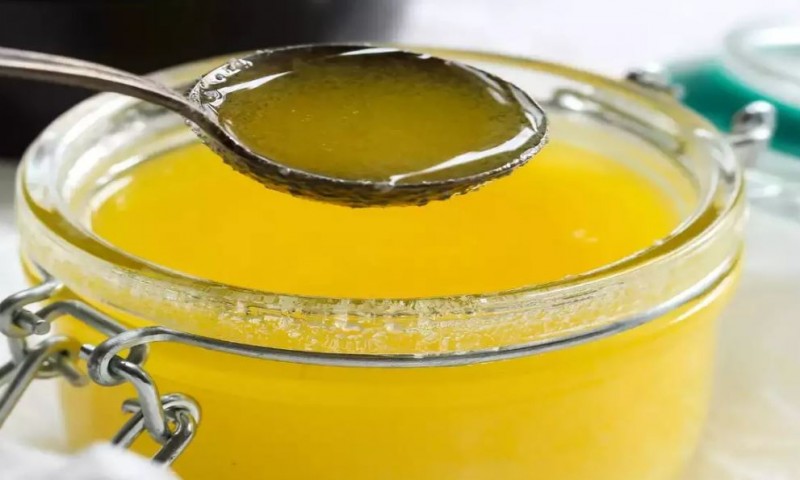
With a plethora of ghee varieties available in the market, distinguishing between real and fake ghee is crucial for ensuring its health benefits and avoiding harmful adulterants. While pure desi ghee is known for its rich flavor and numerous health benefits, adulterated or counterfeit ghee can pose significant health risks. Here are several methods to help you identify authentic ghee and avoid counterfeit products.
Using Your Senses:
Aroma:
Real desi ghee has a distinctive, rich, nutty aroma that is hard to miss. Fake ghee might lack this characteristic smell or have an artificial or chemical-like odor.
Color and Appearance:
Authentic ghee typically has a golden-yellow color. If the ghee appears too white or has an unusual color, it might be adulterated. However, some variations can occur due to different cow breeds and their diets.
Texture:
The texture of pure ghee is consistent and smooth. It melts quickly at room temperature and solidifies uniformly when cooled. Fake ghee might have an uneven texture or feel greasy and sticky.
Practical Tests for Identifying Pure Ghee:
Paper Test:
Take a small amount of ghee and place it on a white paper or a plate.
Leave it for a few hours.
If the ghee leaves behind any residue or oily stains, it indicates adulteration. Pure ghee should not leave any residue and the paper should remain clean.
Heating Test:
Heat a small quantity of ghee in a pan.
Pure ghee will melt quickly and evenly, emitting a pleasant aroma without producing much smoke.
Adulterated ghee might take longer to melt and could produce a strong, unpleasant smell along with smoke.
Water Test:
Add a spoonful of ghee to a glass of warm water.
Stir well and observe.
Pure ghee will dissolve completely and the water will remain clear. In contrast, fake ghee might leave particles or a cloudy residue in the water.
Refrigeration Test:
Place the ghee in the refrigerator for a few hours.
Pure ghee solidifies uniformly and becomes grainy in texture.
If the ghee doesn’t solidify properly or forms crystals, it indicates adulteration.
Burn Test:
Take a small amount of ghee in a spoon and heat it with a flame.
Pure ghee will burn cleanly and emit a fragrant aroma without much residue.
Fake ghee will burn with a lot of smoke and may leave behind a residue, indicating impurities.
Why It's Important to Identify Pure Ghee:
Health Benefits of Pure Ghee:
Rich in Nutrients: Pure ghee is a source of healthy fats, vitamins A, D, E, and K, which are essential for overall health.
Aids Digestion: Ghee helps in stimulating the secretion of digestive enzymes, aiding better digestion.
Boosts Immunity: The butyric acid in ghee strengthens immunity and supports the gut microbiome.
Enhances Taste: Pure ghee adds a unique flavor and richness to dishes, making it a preferred choice in many traditional recipes.
Risks of Consuming Fake Ghee:
Health Hazards: Adulterated ghee can contain harmful substances that pose health risks such as digestive issues, allergic reactions, and long-term health problems.
Nutritional Deficiency: Fake ghee lacks the essential nutrients found in pure ghee, depriving you of its health benefits.
Unpleasant Taste: Counterfeit ghee can ruin the taste of your dishes with its artificial flavor and texture.
Identifying real ghee is essential to reap its health benefits and avoid the risks associated with counterfeit products. By using sensory observations and practical tests such as the paper test, heating test, water test, refrigeration test, and burn test, consumers can effectively distinguish between pure and adulterated ghee. Being vigilant and informed helps in making healthier choices and ensuring that the ghee you consume is truly beneficial for your health and culinary needs.
Mass Doctors Strike in England Amid NHS Crisis Ahead of UK General Election
Hydration Alert: Five Foods and Drinks to Avoid When Dehydrated
A Sneak Peek into Apple Watch Series 10: Bigger Display, Advanced Health Tech